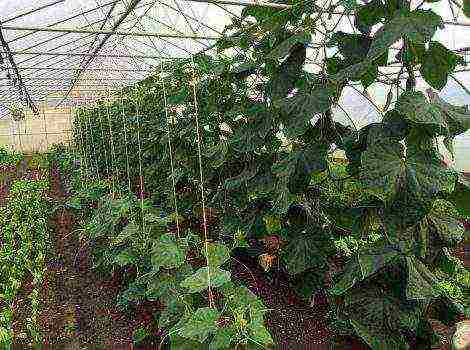Content
- 1 The soil
- 2 Temperature
- 3 Room area
- 4 Sale
- 5 What kind of room can be used, requirements for it
- 6 What types of worms are best to use and why
- 7 What equipment is needed
- 8 What container and in what cases is it better to use
- 9 What soil is better to use and why
- 10 What and how to feed the worms
- 11 Breeding and growing the worm
- 12 The main feature is benefit and earnings
- 13 Biohumus
- 14 Secrets of the worm business
- 15 Worm Cafe Vermicomposter
- 16 Breeding worms video
Breeding worms as a business is a great way to generate income without serious financial costs. The start-up capital is minimal, the equipment is simple. The technology of growing worms at home does not require special knowledge and skills.
For those who decide to start a business, selling worms is a great option for making a profit with a small start-up capital. High profitability and strong demand will ensure the prosperity of your worm farm. Learn the features of this process, invest a little money and get a stable income.
Is there a demand for who are the buyers of the worms?
Before opening a worm farm (this is the name of a worm breeding site), research who will need your products. Creeping Workers provide several valuable products that can be sold:
- actually live worms;
- biohumus (fertilizer);
- worm tea (vermicai).
To fertilize the soil
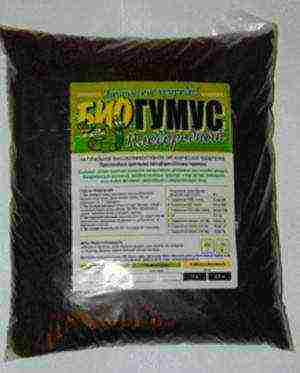
Valuable organic fertilizer - vermicompost is in demand both by summer residents and large farms. Vermicompost increases soil fertility, enriches it with useful substances.
Start small. Use the humus yourself and sell it to your neighbors in the country. Expansion of production will allow reaching more respectable customers.
For fishing
It is rare now to meet a fisherman who spends time looking for worms for the upcoming fishing, digging up the soil. Most prefer to come and buy bait from fishing shops. The life span of worms is long, the demand is stable. One individual can be sold for 2 rubles. How many worms do you need for fishing? Minimum 30 pieces. You will sell several packs in a day. The conclusion is obvious.
To the pet store
Birds, fish and other inhabitants of the pet store constantly need live food. The worms will be taken from you with great pleasure.
For fish farms
Fish farmers need a lot of live feed. The high nutritional value of worms explains the need for worm products.
For plant nutrition
Worm tea - a unique product that allows to increase the yield of fruit and vegetable crops by more than 2 times. Those who grow strawberries for sale will also become your customers. The waste product of worms is collected in a container. Natural fertilizer can be used for indoor plants and for open and closed ground (in greenhouses).
The production of vermicompost and its demand is described in this video:
Technology Basics
The scheme is as follows:
- Preparing the habitat of your "pets".
- Purchase of broodstock, consisting of adults, fry and worm cocoons.
- Accommodation of the family in a prepared "house".
- Processing of compost by worms and transformation of the latter into vermicompost after a certain period of time.
- Reproduction of worms.
- Collection of fertile layer, worm tea, live specimens for sale.
- Adding a new layer of nutritious bedding that serves as food for the worms.
- The process starts over.
Nuances and secrets in the process of breeding worms
Take into account the peculiarities of the life of the worms.Your task is to create comfortable conditions for their life and reproduction. A quiet, peaceful place without vibration or noise will help you achieve good results.
The soil
It is not enough just to put earth in a box, populate worms and wait for them to multiply quickly. The soil in which they live can be divided into three zones:
- Upper layer - food place. A soil enriched with nutrients and organic debris will be required;
- Middle layer - the space where the bulk of individuals live;
- bottom layer - the most valuable. It accumulates soil processing products and derivatives of life: biohumus and worm tea.
Temperature
Observe the temperature conditions in the room. The optimum air temperature is from + 15C ... + 25C. There is a type of worms that reproduce well at a temperature of + 8C ... + 30C.
Room area
Please note: worms multiply quickly. Consider if you can increase the area of the vermi farm. Prepare enough new transplant houses.
Sale
Growing worms year-round will require good distribution channels. Study the market and potential buyers in your area, city, village. Focus on the indicators: a stable family, having overwintered in good conditions, will increase almost 10 times!
Basic conditions for breeding worms - what is needed for this business
Study each item carefully. Setting up a homemade vermi farm is easy enough. The advice of experts and experienced farmers will help you.
Even some retirees are planning to open a Californian worm breeding business, the main thing is to study the technology and apply it in practice, which is described in this video:
What kind of room can be used, requirements for it
Any heated room with normal humidity will do:
- garage;
- cellar;
- attic;
- an outbuilding.
Below + 4C, the air temperature should not fall. The worms will hibernate. At temperatures above + 36C, individuals will die.
What types of worms are best to use and why
Various types of worms are suitable for a home worm farm. Pay attention to popular varieties.
Common earthworm
Local worms, well adapted to the habitat, are used because of their quick adaptation to the conditions of a closed farm in their native soil. Reproduction will start faster. The disadvantage is that the vital activity is lower than that of the stronger "thoroughbred" species.
California red worm (HRC)
Popular view. When buying, make sure that the individuals are mobile and red in color. The broodstock should be from 1500 individuals or more. 1 cubic meter of soil will require 1 to 3 families.
It multiplies quickly, gives high-quality biohumus. Not picky about food. Poorly tolerates temperatures below + 10C.
Prospector worm
Direct competitor to the famous Californian counterpart. High activity, the ability to process feed efficiently, and a rapid increase in biomass distinguish the Prospector species.
It tolerates temperatures from + 9C to + 28C. From 1000 kg of substrate, the output of vermicompost reaches 60%.
Give preference to industrial types of worms: HRC or Prospector. Productivity is higher than that of a common earthworm.
What equipment is needed
To organize a small homemade worm farm, you need a minimum amount of equipment and inventory:
- scales;
- sieve for sifting;
- wheelbarrow;
- bucket;
- shovel;
- pitchfork;
- instruments measuring the acidity of the soil and its temperature;
- room thermometer;
- racks.
Focus on the correct arrangement of piles, pits or boxes for growing worms and preparing compost.
What container and in what cases is it better to use
Where to place newly acquired individuals and where to plant new families? At home, several types of nurseries are used:
- Wooden box
Size: 1m x 2m x 0.5m. Boards - from 25 mm thick. The holes in the bottom will allow the valuable liquid to drain out.To collect it, the box is installed with a slight slope. At the bottom you need a pallet for collecting vermicom. The cover is made of plywood and knocked down boards with holes for ventilation.
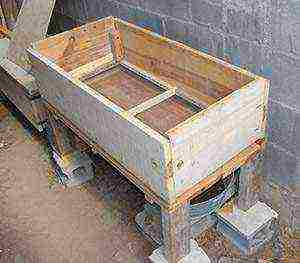
- Old refrigerator
All "insides" are removed, the camera is installed with the door up. We need holes for ventilation in the door and walls. Be sure to install the "house" at an angle on the bars.
- Cardboard box
An excellent option to start activities. Dimensions of the box-nursery made of cardboard: 400 mm x 300 mm. Eco-friendly material "breathes" well. The worms feed on pieces of cardboard. The box is damp and thinner - bring a new one.
- Plastic container
There are many varieties: from a large flower pot to a high-quality large plastic container. A prerequisite: air access, otherwise the worms will suffocate in too wet soil. Drill holes in the walls and lid. Place a basin or drip tray to collect vermicom.
- Special vermicompost
The most convenient and expensive option for breeding worms. Most small entrepreneurs use simpler homemade options.
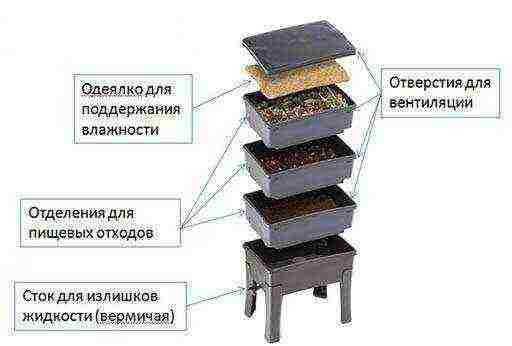
How the vermicompost works
What soil is better to use and why
The activity of individuals, their reproduction and the rate of processing of organic waste depend on the quality of the soil.
Follow the rules:
- Cover half of the container with a layer of humus. You can add a little shredded cardboard;
- moisten the mixture. Humidity should not exceed 70-80%;
- after 2-3 days, make several depressions in the soil, populate the worms with a part of the soil in which they lived before transplanting into the box;
- gently level, moisten the soil. Cover the "house" with cardboard;
- wait a couple of days;
- after successful acclimatization, feed can be applied.
Always carry out a test check in a small container. Place 50 to 100 individuals on the substrate. Check in a day if they are still alive. This way you will find out if the acidity of the soil suits your pets.
Optimal indicator:
- from 6.5 to 7.5 PH.
Several dead worms are a signal for a change in acidity.
To increase the indicators will help:
- sawdust or straw;
- tops of plants.
To reduce acidity, the following are suitable:
- regular chalk;
- crushed shell;
- limestone.
What and how to feed the worms
All types of worms do not have special food requirements. The value of worms is that they accelerate the processing of waste rotting in your area in the compost heap for 1.5 - 2 years several times. Vermicompost for sale and grown worms can be harvested every 4-6 weeks.
Basic feeding rules
The worms feed on rotting and dead plant debris.
Prohibited:
- meat waste;
- citrus. Increase acidity;
- not diluted kefir. Increases soil acidity, leading to mold growth;
- whole peel of vegetables or fruits, nibs (freeze or skip the peelings through a meat grinder to destroy cell walls);
- fresh manure. A decaying substance gives off a large amount of heat. The temperature will rise to 70C, the worms will die.
Recommended:
- plant residues: cabbage leaves, potato peels, banana peels, boiled vegetables;
- food waste;
- stale bread, pastries;
- tea leaves and coffee grounds;
- eggshell powder;
- the water with which you rinsed the sour cream or kefir can;
- grass, leaves, straw;
- fermented manure (cow, horse), chicken droppings. Important: very old manure contains few nutrients.
A new portion of food is added after everything is eaten. Excess food waste leads to increased acidity and fermentation in the soil.
What packaging options for transferring worms to customers can be used
Products are packed in:
- dense plastic bags 150mm x 100mm in size with holes for breathing worms. Store at a temperature approaching the lower mark. This will make the worms less mobile. Adequate soil layer is required. Convenient for fishing shops or individual fishermen;
- cardboard boxes.Box weight - within 8 kg. A sufficient layer of substrate is required. Uterine colonies tolerate transportation well. The transfer method is suitable for large consignments of goods.
Please note: you must send a brood colony of cocoons, fry and adults to the buyer.
Implementation options for worms
Use all channels to attract potential buyers. People need to learn as much as possible about your product.
How to sell:
- Direct selling method. Go with the goods and offer to shops "everything for fishing", to pet stores, to familiar fishermen, neighbors in the country, farmers. Vermicay is readily taken by amateur flower growers and avid summer residents.
- Advertising on the Internet: on free message boards such as Avito, in social networks, on a farm or fishing site. Perhaps you have your own website? Use this platform too.
If funds permit, print handouts. If you are limited in finances - write ads and post them on message boards.
Estimated estimated business profitability
Breeding worms as a business is a profitable investment. From 2 cubic meters of nursery for a year of successful work, you can get up to 15-20 thousand individuals for sale and about a ton of vermicompost. Only 2 rubles for 1 unit - and you already have 40 thousand rubles. Add the cost of vermicompost and vermicelli.
The profitability of the vermi farm is in the range of 150% and higher. Some owners manage to raise this indicator even higher.
The reasons for such good performance:
- practically waste-free technology;
- minimum food costs for worms;
- high reproduction rate of individuals;
- low production costs;
- fast and high-quality processing of waste into vermicompost;
- equipment can be made from scrap materials;
- minimum of workers serving the farm;
- ample opportunities for product marketing;
- steady demand.
Pros and cons of a worm farming business
The cultivation of worms benefits both the owner of the worm farm, the environment, and numerous buyers, who are relieved of the problem of finding valuable protein feed. There are practically no drawbacks to such a business.
For those looking to grow worms for sale, it is wise to start with a small home farm in an old refrigerator or wooden box.
Having fully mastered the technology, having studied the nuances of the case in practice, "recruiting" clients, you will be able to expand and organize a vermi farm on an industrial scale. More substantial investments will be required. At this stage, it is possible to prepare a business plan for breeding worms in order to optimize processes and attract additional funds for development.
A home mini-farm will allow you to put together enough capital to start a serious production.
Now you know that breeding worms as a business is profitable for you and good for the environment. Learn the technology, establish distribution channels - and your business will flourish.
Breeding and growing the worm
Breeding worms at home as a business is only gaining momentum in Russia, while in the west it has long been practiced. Many are thinking of opening their own mini-farm for breeding a worm. Imagine an avid fisherman who has his own worms all year round, the worm can be bred all year round. And not everyone understands that the worm can be grown both for oneself and on an industrial scale, that is, for sale.
If we say that you will “earn a million rubles per year” by breeding ordinary worms, then of course it is difficult to believe, but everyone will believe that everyone who wants to breed worms can. Well, after that, maybe someone really wants to make a million a year on breeding our laborers.
The main feature is benefit and earnings
There are many uses for worm breeding. The very first thing that comes to mind is growing a worm as bait for fishing.But here you need to understand that this business direction is only suitable for the summer season, since in winter worm fishing will certainly not be relevant and you will have to constantly wait for the next season.
The second thing that comes to mind is the breeding of a worm for agriculture, which becomes popular every year among Russian entrepreneurs. How are they useful in the household? Here you can find several directions in the use of worms.
Biohumus
They can be used as feed for livestock such as birds, fish, if you are raising fish on an industrial scale. One of the main features of these useful animals is the production of vermicompost. Vermicompost is a first-class fertilizer for increasing soil fertility, which is produced by worms, it is used for seedlings and plant nutrition.
There are two types of worms that can be easily grown at home for yourself and in industrial:
- One of the known species is the Coliform worm in a year, one worm can give birth to up to five hundred individuals. Its life span is not a few, not many, 10-16 years. Permissible temperature + 15-30C; normal temperature + 18-25C heat. Humidity is not less than 66% and not more than 90%. Also, do not forget that they need to be protected from pests: rats, mice, rabbits, moles from all rodents.
- The second species that we will consider is the black prospector, it should be noted that this type of worm is more productive and one worm can produce up to one and a half thousand of its own kind. Worms are active at temperatures not lower than + 8C and not more than + 30C, worms multiply at the same temperature. 1500 worms are capable of producing 100 kg of vermicompost, that is, if we take one ton of compost, we will get up to one ton of vermicompost and up to 16 kg. worms, and one black prospector worm can produce up to 100 kg. vermicompost for one year.
Secrets of the worm business
The main thing is not to forget about their natural habitat. Worms feed on the surface of the earth, since it is on the surface that most of the nutrient organics, plants and animals accumulate. Therefore, hard workers rise to the surface to feed.
In the lower part of the vermicomposter, worms leave humus - this is a product of their vital activity, which is also called worm tea. Between the upper feeding area and the lower surface, there is a middle surface where the worms can be found throughout the colony.
A vermicomposter is a mini-farm that you can buy in a special online store. mini-farm consists of several parts, see the video for details.
Worm Cafe Vermicomposter
The approximate cost of one worm on the market from 10 rubles
Here you need to choose why you will breed them, if for yourself you can choose the first option. If for agriculture or for sale, then the second option is naturally more suitable.
As for the maintenance costs, there are practically none. Worms can be fed with rotten hay, they eat last year's leaves of trees and all vegetation, manure, they can be fed with food waste crumbs of bread, used tea leaves, peeling potatoes, etc. It is better not to abuse meat waste as it causes an unpleasant odor. In general, it is generally accepted that worms are herbivores, although they also will not refuse to fall.
In essence, the worms are immortal, which means that the breeding of earthworms at home as a business is also immortal.
Breeding worms video
Added to favorites: 0
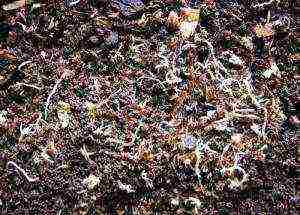 Enkhitrei - larger (10 - 20 mm long) white worms that live in the surface layer of the soil. They are bred in special wooden or plastic boxes with an area of 0.2-0.3 m2. The height of the box is 10 - 15 cm. The soil is sieved through a 3 - 4 mm sieve before laying, and cleaned of impurities.A layer of peat is poured onto the bottom of the box (as a last resort, you can do without it), and then the prepared soil, usually garden soil, 3 cm below the top edge of the box. Worms are introduced into the ground to a depth of 4 cm, and food is also laid here. How do you start such a worm breeding business at home?
Enkhitrei - larger (10 - 20 mm long) white worms that live in the surface layer of the soil. They are bred in special wooden or plastic boxes with an area of 0.2-0.3 m2. The height of the box is 10 - 15 cm. The soil is sieved through a 3 - 4 mm sieve before laying, and cleaned of impurities.A layer of peat is poured onto the bottom of the box (as a last resort, you can do without it), and then the prepared soil, usually garden soil, 3 cm below the top edge of the box. Worms are introduced into the ground to a depth of 4 cm, and food is also laid here. How do you start such a worm breeding business at home?
The optimum temperature for successful reproduction and life of worms is 17 - 18 ° С (permissible fluctuations are 10 - 22 ° С), soil moisture is 23 - 25% (permissible fluctuations are 22 - 35%). The culture of worms is applied in an amount of at least 10 g per area of 0.1 m2. For 30 - 40 days, the biomass of worms increases 2 - 3 times, and then increases 4 - 7 times every 20 - 30 days. You can use the culture after 40 - 50 days. What does it take to start a California earth pot worm business? It is no more difficult than growing tomato seedlings. Over time, it will be possible to think about the production of vermicompost on an industrial scale or the cultivation of a prospector worm.
Feed
Food for enkhitrey can be kitchen waste, various plant foods: cereals, bran, flour, vegetables, root crops, green herbaceous plants, berries, potato peelings, fodder yeast. Before being introduced into the soil, the feed is brewed and crushed to a pasty state. Dry food is poorly eaten by worms. In unbrewed form, only feed yeast, previously diluted with water, is used. Before introducing the feed, 3 to 4 grooves with a width of 3 to 4 cm are made in the soil, into which portions of feed are added with a tablespoon. The food is covered with a layer of soil, which protects it from mold infection. The box is closed on top with a wooden lid or glass.
Care
When caring for a crop, it is necessary to monitor the moisture content of the soil, loosen it regularly, as the culture grows, select worms. Systematically check for foreign animals, flies, ticks. When they appear, the outer surface of the box is treated with a solution of hexachlorane. If enchitrea are in a state of active feeding and reproduction, the soil is loose. At the same time, the worms have a well-nourished appearance and a slightly creamy color, which indicates a good state of the culture.
In the video: the process of growing worms on an industrial scale
Selection
Various methods are used to select worms. Usually, the worms are concentrated in large lumps at the feed, they are removed from there with tweezers. You can put the soil with the culture in a cuvette, which is immersed in hot water. Fleeing from overheating, the worms come to the surface of the soil. When feeding the fry, enchitrea are cut with a razor blade on a plastic lid from cans to a mushy state. Adult fish often get fat when fed with enchitrea.
One of the foods most commonly used by aquarists is the tubifex. These are reddish worms that live in water bodies heavily polluted with organic matter. On the muddy bottom, they sometimes create significant accumulations, staining the bottom reddish. This color is determined by the backs of the worms, which they expose to the water from the silt and make wave-like respiratory movements with them.
The cultivation of the tubifex is ineffective and causes great difficulties, therefore it is necessary to extract it from natural reservoirs. The soil with a significant content of the tubifex is scooped up with a special scoop, then washed from silt and clay. This can be done in a wash bottle. The rest of the soil with worms is put in a bucket and the next portion of silt is scooped up.
Branch
Separate the pot worms from the soil as follows: lay out the soil (you can even scoop up silt) in a thin layer in a basin or on an iron baking sheet and fill it with water so that the water layer above the ground is 1 - 2 cm.With a high content of worms in the soil, very quickly Oxygen deficiency occurs, the tubule goes to the surface of the soil and gathers in balls, from where it is removed by hand or with tweezers and transferred to another vessel, in which the cleaning process is repeated. After secondary cleaning, the worms are laid out for the third time on the bottom of a basin or baking sheet, covered with gauze on top in one layer and again poured with water, while the worms, already completely cleaned, are collected in gauze.
Separate the worms from the soil in another way, heating it from below, as when harvesting enchitrea, but at the same time it is necessary to monitor the temperature of the soil so as not to boil the worms. A tubule, cleaned in this way, is weakened and difficult to maintain, so it is better to use the first method.
What to do next?
After harvesting the pot worms, the tubifex is kept in running water for 5 to 7 days so that their intestines are free of sludge, which contains many harmful substances, because the reservoirs in which the tubifex lives are usually heavily polluted with various industrial wastes. Store the pipe maker in a basin in running water or in a flat dish with a small layer of water on the bottom shelf of the refrigerator. The ball of worms should be covered with water 1/2 or 2/3. Flat plastic jars with a lid are best suited for these purposes. The water should be changed 1 - 2 times a day, in this way you can store the worms for a month.
For the original culture, worms can be found in silted natural reservoirs. Aulophorus can be easily distinguished by its spiral motion in the water. Just like the tubifex, it can form colonies on the substrate. In this case, the front end of the worms burrow into the substrate, and the back end with gills is exposed outside into the water. They feel great in the water column, often gathering in balls at the water's edge.
On the video Business idea breeding worms for beginners
Vessels
Worms are grown in various vessels. These can be flat cuvettes with a water layer of 2 - 3 cm, or 10 - 20 liter crystallizers, jars and ball aquariums. There should be several flat vessels, the water in them must be replaced daily with fresh, settled or aquarium water. Aulophorus are more sensitive to unsettled water than tubifex. When cultivating in deep containers, aeration is required. Feed is given simultaneously with the introduction of the culture of worms. The food is placed in foam plastic feeders with a gas mesh No. 11 - 17, the mesh can be stretched in several layers, and food can be fed into bottom feeders such as Petri dishes.
Carrots, grass flour, dried clover, pieces of pumpkin, zucchini and baker's yeast are used as feed. The components, as in the cultivation of enchitrea, are best scalded with boiling water, grind and knead until they are doughy. Feed is given as it is eaten at the rate of 1 g of feed per 1 g of worms.
The optimum temperature for reproduction of worms is 24 - 28 ° C. The water needs to be changed - 2/3 of the volume once every two days, sometimes more often. The culture is formed within 10 - 20 days, during this time the biomass of the introduced worms doubles, then the biomass of the aulophorus doubles every 5 - 7 days. Worms usually accumulate on the bottom or underside of the trough, and if there is a lack of oxygen, at the surface of the water, they can be easily removed from there. Therefore, by reducing the blowdown, you can get a portion of the worms for feeding the fish at any time. Fish larvae are fed with a worm crushed to a mushy state. Whole worms can be fed to almost all adult fish.
Very good food for large fish - cichlids, goldfish, tetraodons - are well-known earthworms. In our country there are up to 50 species of these worms. Their sizes for feeding are selected in accordance with the size of the fish. They keep worms for a long time in boxes, cans with turf, garden soil, wet sand and in wet canvas bags. Before feeding, they are kept for 2 - 3 days in a jar with a lid to cleanse the intestines, rinse them from mucus and only then feed them to the fish.
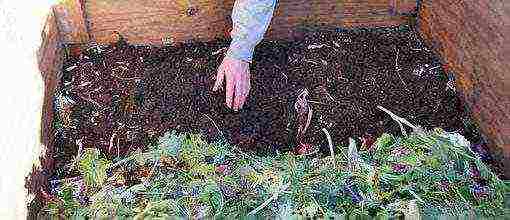
Table of contents:
- What you need to know about California worms
- Factors affecting the rate of reproduction of worms in an artificially created environment
- Directions in breeding earthworms
- Quantitative indicators of the increase in the biomass of the worm and the output of the finished humus
Breeding earthworms for processing organic waste, obtaining organic fertilizers and biologically active substances has long since left the stage of experimental development and has become a large-scale business. Around the world, many companies of various sizes have been created and are successfully operating.
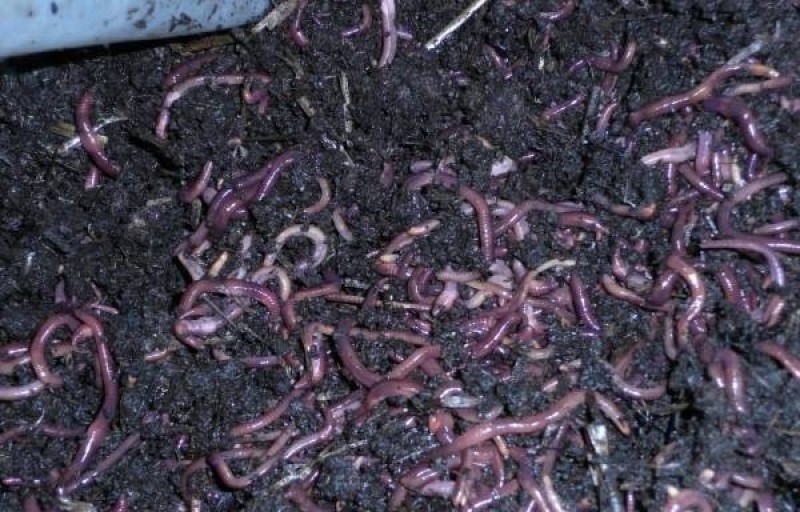
Before starting a worm business, you need to understand the essence of vermicultivation, study their life in nature, understand the best conditions for reproduction and have access to a constant source of organic waste.
What you need to know about California worms
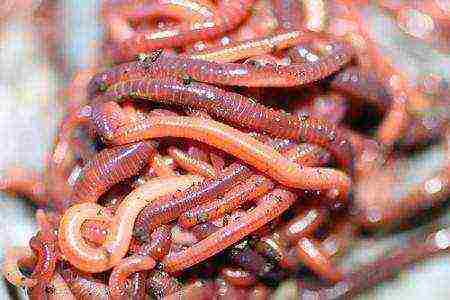 Earthworms are very ancient soil invertebrates, the most numerous on earth. The most popular and widespread type of earthworm cultivated by people in cold countries is the dung worm Eisenia fetida. The California red worm (Eisenia Andrei) is a subspecies of it (Eisenia fetida Andrei). Other species grow and multiply more slowly, and therefore are rarely used in vermiculture.
Earthworms are very ancient soil invertebrates, the most numerous on earth. The most popular and widespread type of earthworm cultivated by people in cold countries is the dung worm Eisenia fetida. The California red worm (Eisenia Andrei) is a subspecies of it (Eisenia fetida Andrei). Other species grow and multiply more slowly, and therefore are rarely used in vermiculture.
Red Californian worms are able to process any organic matter (manure, kitchen waste, sewage sludge, last year's foliage, paper, and more), multiply very quickly (100 times faster than other species) and live 4 times longer than wild worms ... Californian, like other earthworms, do not get sick with anything, are not subject to epidemics. California worms have a lifespan of at least 16 years.
Back to the table of contents
Factors affecting the rate of reproduction of worms in an artificially created environment
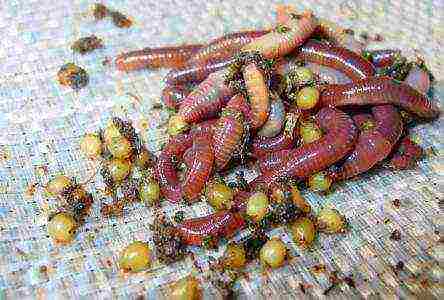 Californian worms are bought only together with the substrate. It is imperative to ask the seller what served as food for the worms before selling. Approximately such a top dressing should be given the first time, smoothly transferring to new types of feed. It is necessary to provide the worms with normal nutrition and the necessary moisture, and they will not leave the substrate. The required amount of feed is determined from the following calculation: 1 kg of worms per day eats 1 kg of waste.
Californian worms are bought only together with the substrate. It is imperative to ask the seller what served as food for the worms before selling. Approximately such a top dressing should be given the first time, smoothly transferring to new types of feed. It is necessary to provide the worms with normal nutrition and the necessary moisture, and they will not leave the substrate. The required amount of feed is determined from the following calculation: 1 kg of worms per day eats 1 kg of waste.
In vermitechnology, the correct preparation of the substrate for the worms is very important. Waste is pre-fermented in piles on a flat area. The size of the collars depends on whether the means of mechanization are used, and are: width - from 1.7 to 2 m, height - from 1.5 to 2 m, the length of the collars depends on the size of the area for the worm farm.
The key factors that affect the rate of reproduction of worms are temperature, humidity, acidity and oxygenation of the substrate. The optimum temperature for commercial breeding of worms ranges from 15 to 21 degrees C. If the temperature of the substrate rises to the critical level of 30 degrees C, it is necessary to cool the substrate with water, otherwise the worms may die. The complete absence of oxygen in the substrate can lead to the death of the worms. The moisture content of the substrate must be maintained in the range of 60 to 80%. It is also necessary to remember about acidity: for the best growth rates, ensure the acidity of the substrate in the range of 6.2-7.2 PH.
Back to the table of contents
Directions in breeding earthworms
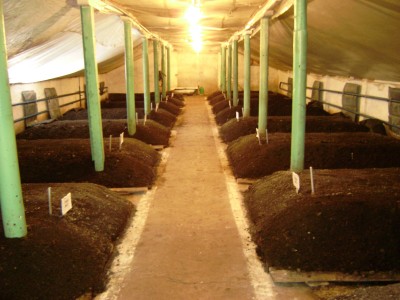 In the process of their vital activity, technological worms process the substrate into two valuable products: into biomass of living worms and into vermicompost (granular organic fertilizer). Based on this, industrial breeding of earthworms has two directions: vermicomposting and vermicultivation.
In the process of their vital activity, technological worms process the substrate into two valuable products: into biomass of living worms and into vermicompost (granular organic fertilizer). Based on this, industrial breeding of earthworms has two directions: vermicomposting and vermicultivation.
Vermicultivation - breeding earthworms in artificially created conditions. Grown worms can be implemented as:
- natural food for some pets;
- very high-calorie food with a high protein content - a valuable supplement for aquarium fish;
- fishing bait;
- a mixture of biologically active substances for the enrichment of animal feed.The dry matter contains up to 60% of complete protein, the level of essential amino acids of which is very high, 20-25% of fat with a high iodine content, many vitamins and microelements;
- raw materials for the pharmaceutical industry.
As a result of research on earthworms, enzymes with powerful cleansing and disinfecting properties were isolated from tissues.
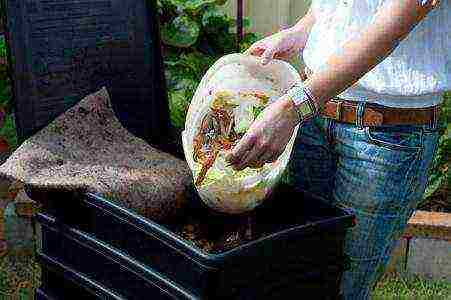 Vermicomposting is the use of the vital activity of earthworms for the purpose of high-quality processing of organic matter. As a result of such processing, vermicompost is formed - the most valuable plant fertilizer.
Vermicomposting is the use of the vital activity of earthworms for the purpose of high-quality processing of organic matter. As a result of such processing, vermicompost is formed - the most valuable plant fertilizer.
Vermicompost is used both by itself and its derivatives: liquid organic fertilizers and humic preparations. They can be used in agriculture to stimulate plant growth, to protect plants from diseases, to relieve soil fatigue, as nutritious and very useful additives in feed mixtures and substrates.
Vermiculture and vermicomposting are so closely related that they form a single process. Vermi production or an earthworm business is a simple and attractive technology for both farmers and villagers and townspeople. The biggest advantage of a worm business is that you can start with a minimal investment. Having learned how to properly handle several hundred worms and having offspring from them, you can acquire a large batch of worms. The creation and maintenance of good conditions for the life of the worm will allow in the shortest possible time (no more than six months) to increase production volumes several times.
Another line of business on worms is the cultivation of environmentally friendly crops. Vegetables grown on biohumus are valued much higher than those grown on manure, and even more so on mineral fertilizers. More and more people are choosing foods labeled "organic".
Back to the table of contents
Quantitative indicators of the increase in the biomass of the worm and the output of the finished humus
 Vermicultivation makes it possible to obtain a biomass of a worm in the amount of 8 kg from each ton of feed per 1 reproduction cycle on an area of 1 square m with the initial seeding with a worm, based on the calculation of 0.5 kg per square m.
Vermicultivation makes it possible to obtain a biomass of a worm in the amount of 8 kg from each ton of feed per 1 reproduction cycle on an area of 1 square m with the initial seeding with a worm, based on the calculation of 0.5 kg per square m.
The yield of finished humus, depending on the type of substrate and the living conditions of the worms, reaches 40-60%, that is, 400-600 kg of vermicompost is obtained from one ton of organic waste.
The use of vermicomposting in agriculture makes it possible to establish waste-free production even with hardly decomposable waste. For the spring-summer season, 1 sq. per meter of vermicompost, worms process more than 1 ton of properly prepared substrate with 50% moisture content, and as a result, about 500 kg of vermicompost of the same moisture content is obtained. The number of individuals increases, painless for the population for the season from 1 sq. meter, you can select 6-10 kg of worms. A large overcrowding of worms reduces their fertility, it is recommended to keep no more than 70 thousand pieces per 1 sq. meter.
Starting a worm breeding business does not require significant financial investments, nor does it take a lot of time to run it. It is necessary to ensure the regular addition of sufficient feed, moisturizing the substrate, warming for the winter, organize the packaging of finished products and establish sales.
Growing worms is not only a more than 100% profitable business and a stable income, but also a worthy contribution to maintaining the health of the population and the ecology of the planet. Modern technologies of vermicultivation make it possible to utilize huge amounts of biological waste, decontaminate them, and get great profits. The amount of profit depends on many factors, but the main factor is the size of the plot that you allocate for the vermicompost.
In Russia, constant research is carried out and new populations are hatched, new, more efficient and profitable vermicomposting technologies are being developed.


